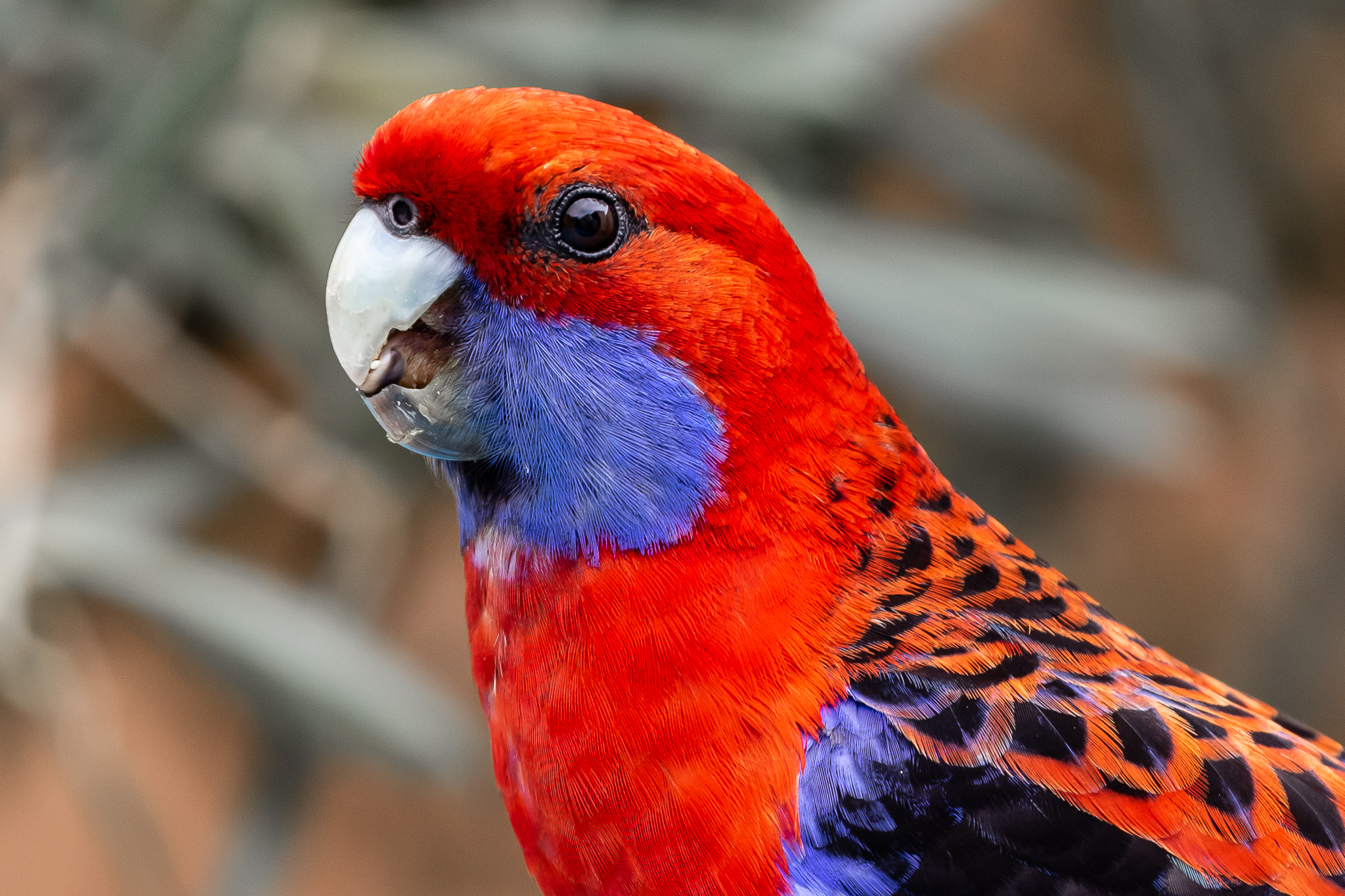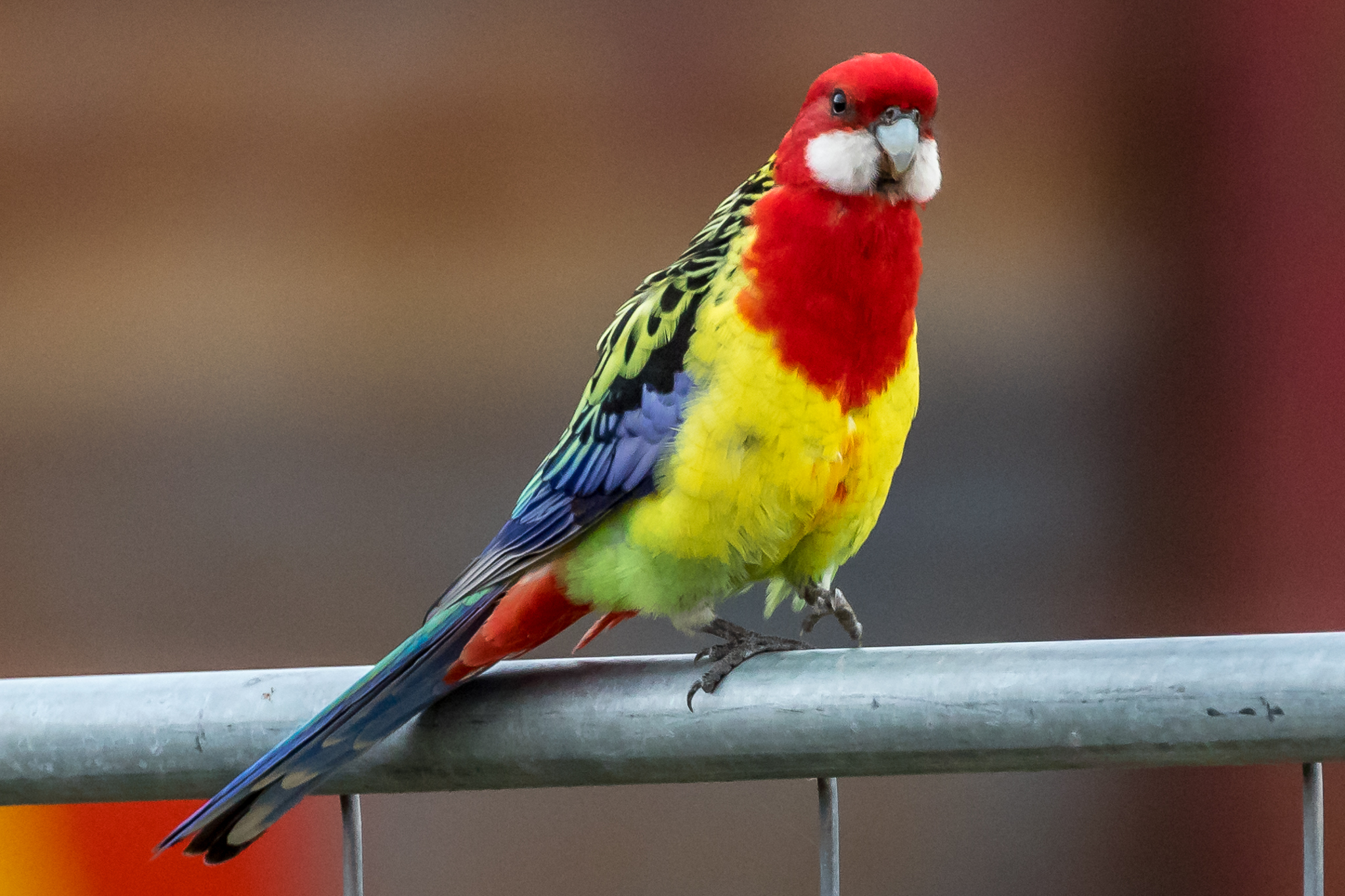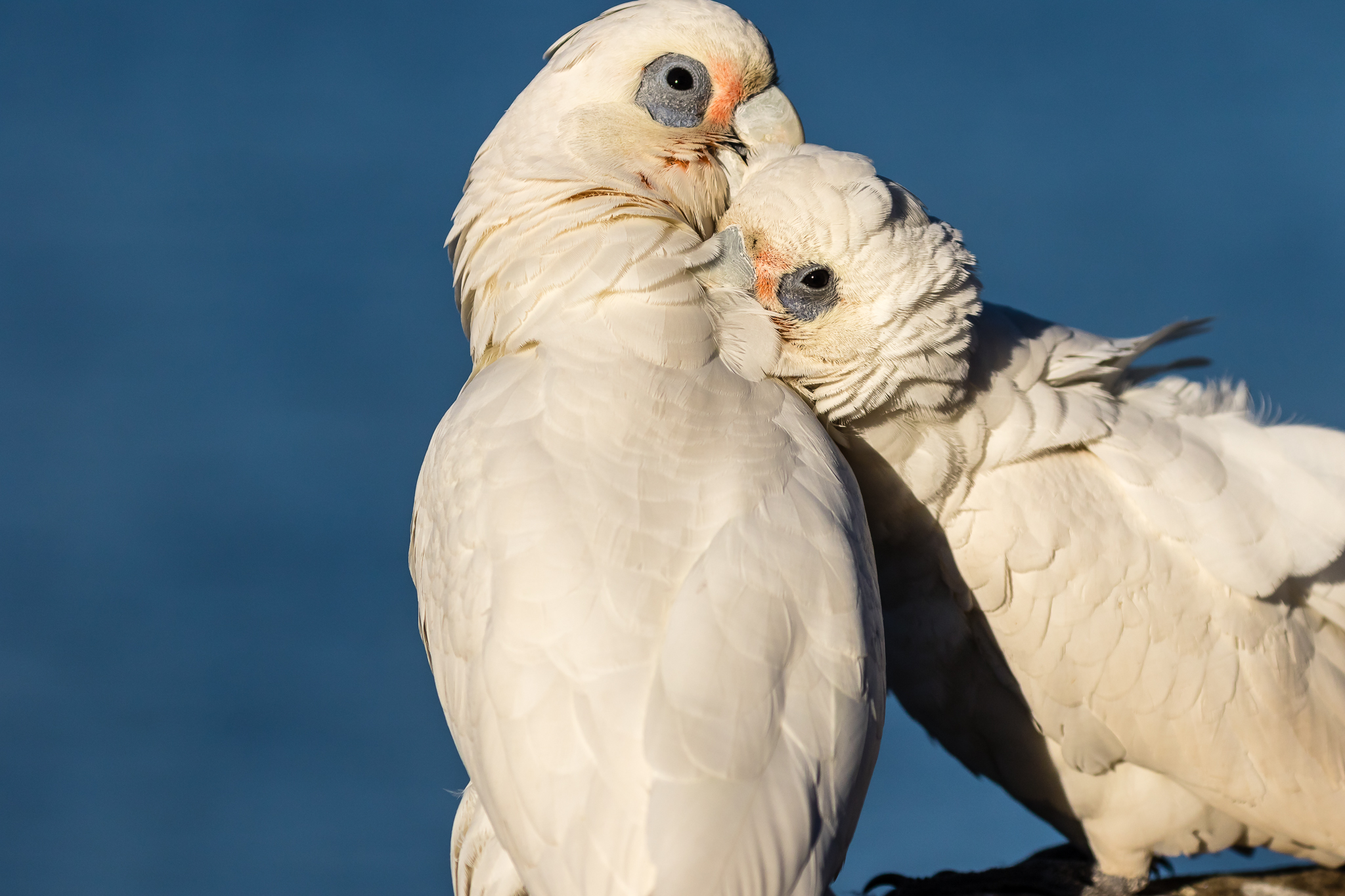Australian Parrots
Australia is the land of parrots, home to 56 species. Parrots are members of order Psittaciformes and Australia has two familys of parrots: 42 members of the Psittacidae or true parrot family (including Rosellas and Lorikeets) and 14 members of the Cacatuidae or Cockatoo family (Cockatoos, Cockatiels, Galahs and Corellas). Parrots are large colourful birds with powerful bills for cracking seeds and nuts, they also feed on fruit, nectar and sometimes insects. Many parrots depend on hollows in mature trees to nest.
Photo: The Crimson Rosella (37 cm) has seven sub-species of varying colour ranging from bright crimson to orange and yellow. They inhabit woodlands and forests across eastern Australia. They feed on eucalypt and grass seeds as well as insects.
The Red-winged Parrot (32 cm) lives in open woodlands and shrubby grassland. Their range extends from Papua New Guinea across the north, Queensland and central north New South Wales. They feed in the trees on fruit, seeds, nectar and insects.
Australia’s largest true parrot is the King-Parrot (44 cm), found in the forests of Australia’s east coast. Australian King-Parrots feed in the trees on seeds and fruit. The male is recognised by its scarlet head while the female’s head is green.
The Eastern Rosella (33 cm) is found in the open woodlands of Tasmania and the south-east of Australia. They feed mainly from the ground on seeds, but also eat fruit, nectar and insects.
The Western Rosella (28 cm) sports a more subtle livery, inhabiting the woodlands of the south-west corner of Australia. Western Rosellas feed on grass seeds and in trees on nectar and insects.
The Blue-cheeked race of the Pale-headed Rosella (32 cm) is found in south-east Queensland. They feed on grass seeds, fruits of various plants and insects.
The Superb Parrot (42 cm) is a vulnerable resident of NSW and north Victoria woodlands. The “Saving our Superb Parrot” conservation program plants food trees for Superbs, and creates nesting hollows in existing trees. Painting by Jane Nafti.
Mulga Parrots (30 cm) inhabit the inland semi-dry areas; the mallees, mulgas and saltbushes of the southern half of Australia. Mulga Parrots eat the seeds of grasses and trees, flowers, fruit and insect larvae.
The spectacular Hooded Parrot (26 cm) lives in the dry savannah woodlands of the Northern Territory. It feeds on seeds, berries and vegetables. They are famous for tunnelling into giant termite mounds to nest.
The Australian Cockatoo family includes these Little Corellas as well as the large Cockatoos. Little Corellas (39 cm) are found widely across Australia, sometimes in very big flocks, feeding mainly on grass-seeds.
The endangered Carnaby’s Black-Cockatoo (60 cm) is found in the woodlands of south-west Australia. It feeds on pine, grevillea and banksia seeds. Black-Cockatoos can live to over 40 years in the wild.
Galahs (38 cm) are one of Australia’s most widespread birds, found in cities, on beaches and in the bush. They feed on seeds from the ground and take advantage of cultivated grain production supplemented by nectar.
The raucous Sulphur-crested Cockatoo (50 cm) is also widely seen in Australia’s northern and eastern states. Their normal diet consists of berries, seeds, nuts and roots but they also chop the end of small branches and can attack wooden window panes.
The Red-Tailed Black-Cockatoo (65 cm) is seen in the north, the west and some central areas of Australia. They eat eucalypt, casuarina and banksia seeds using their bill to extract seeds from hard seed pods. They tear holes in trees to find insect larvae.
These Glossy Black-Cockatoos (50 cm) drink at dusk at a waterhole in a large casuarina woodland. They are found in south east Australia, extracting the seed from casuarina cones supplemented by occasional insect larvae.
The Long-billed Corella (41 cm) once lived in a relatively small area of South Australia but is appearing in a number of other places. This bird was photographed in Sydney where they are now well established.
This cockatoo has recently been renamed the Pink Cockatoo (40 cm). Found in the open country across central Australia, always close to water sources, they have a varied diet of seeds, fruit and insects.
The languid flight and wailing call of the Yellow-tailed Black-Cockatoo (65 cm) make it a favourite for many. Found in south-eastern states and Tasmania. Feed on seeds of trees and shrubs and sometimes insects.
There is a third parrot family, the Strigopoidea, with only three surviving members, all found in New Zealand. The New Zealand Kaka (45 cm) above feeds on fruit, nectar and insects and is found in pockets on New Zealand’s main and offshore islands.
Lorikeets are true parrots. The Red-collared Lorikeet (31 cm) is only found in the Northern Territory and the north of Western Australia. They feed on fruit, nectar, blossoms, seeds and berries.
The Rainbow Lorikeet (31cm) is one of the most common birds found along Australia’s east coast, the south-east and in Perth. They are aggressive out competing others for nest sites and food. The King Parrot on the right waits her turn for food!
Scaly-breasted Lorikeets (23 cm) live on the lowland east coast of Australia as far south as Woollongong. They feed on nectar and pollen in eucalypt forest, heathlands, woodlands and paperbarks.
The Varied Lorikeet (20 cm) is a bird of the north. They are found in tropical forest and woodlands, especially where trees are flowering close to water sources. They feed on nectar and pollen.
The Musk Lorikeet (23 cm) is found across Australia’s south-east. Here it is seen feeding on pollen and nectar high in an eucalypt tree. Musk Lorikeets are nomadic, arriving in numbers at abundant sources of their food.
The “Mallee Ringneck” (38 cm) is one of the Australian Ringneck races found across Australia’s dry centre and west. The Mallee Ringneck inhabits southern inland Queensland to central New South Wales and South Australia. They feed on seeds, fruit, nectar, insects and grain.
Red-rumped Parrots (28 cm) inhabit the open grasslands and woodlands of south east Australia. They eat grass seeds and will also feed on seeds and fruit from trees.
The Swift Parrot (26 cm) is named for its swift flight.They feed on nectar and lerps high in the canopy of eucalypts. Swift parrots breed in Tasmania and migrate north to Australia’s south east region. Forest clearing has caused declines in numbers and they are now listed as an endangered species.


























